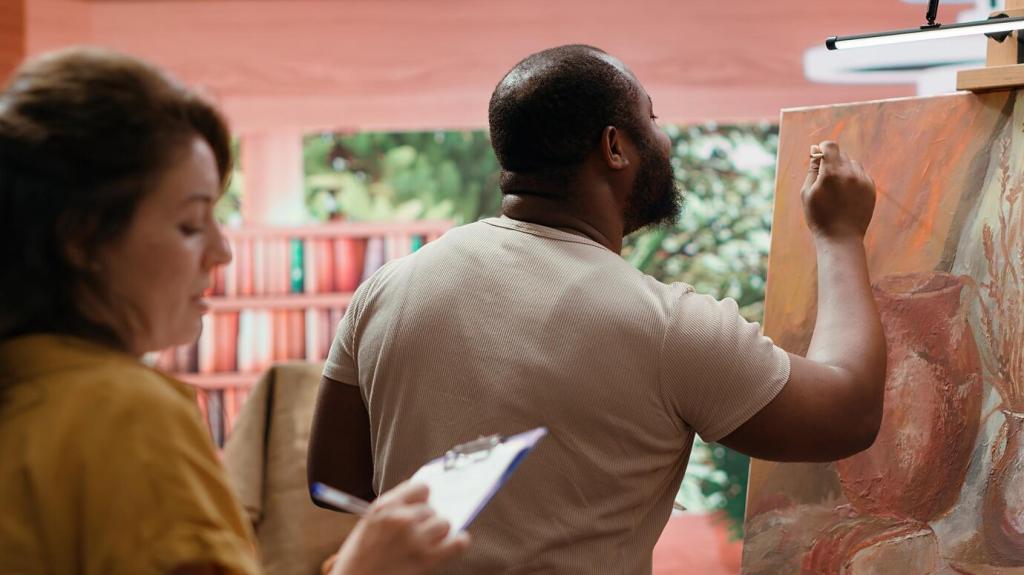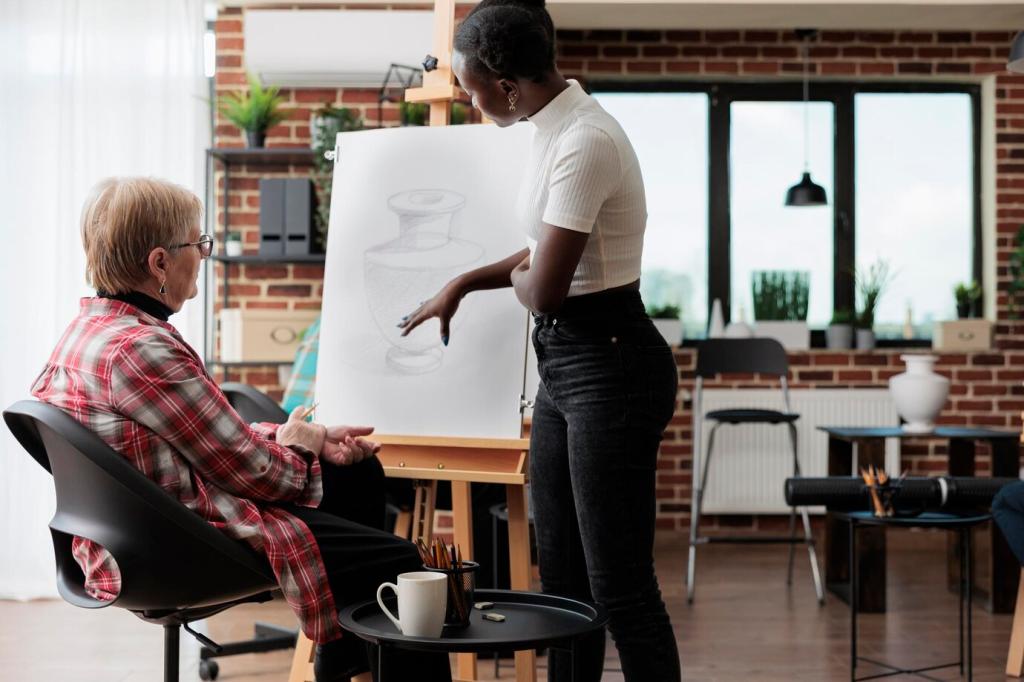
Simple Animal Watercolor Paintings for Beginners
Chosen theme: Simple Animal Watercolor Paintings for Beginners. Start your gentle watercolor journey with friendly guidance, bite‑size steps, and encouraging stories that make painting adorable animals feel approachable, joyful, and wonderfully relaxing. Join our community, subscribe for weekly tips, and paint along with us.
Your First Toolkit: Simple Supplies That Spark Confidence
Choose cold-pressed watercolor paper around 140 lb (300 gsm) so washes don’t buckle too much. A small pad feels less intimidating, encourages frequent practice, and makes your animal studies easier to start and finish.


Your First Toolkit: Simple Supplies That Spark Confidence
A round brush size 6 or 8 handles most beginner animal paintings, from soft bunny fur to tiny bird eyes. Add a small round for details, and a flat brush for simple background washes and clean, confident edges.

Sketching Simplified: Animals From Basic Shapes
Start with a circle for the head and an oval for the body, then add simple triangles for ears or beaks. Keeping shapes basic makes your watercolor layers shine while your animal remains cute, readable, and lively.
Sketching Simplified: Animals From Basic Shapes
Use quick, light lines to capture the tilt of a bunny’s ears or the puff of a sparrow’s chest. An energetic gesture sketch brings personality, helping your washes sit naturally and telling a story without stiff outlines.
Watercolor Basics for Fur, Feathers, and Features
Pre-wet the head shape, drop in diluted color, and watch edges naturally blur into fluff. This approach suits bunnies, fox cheeks, and kittens, keeping forms cuddly and fresh without fussy strokes or anxious corrections.
Watercolor Basics for Fur, Feathers, and Features
With a nearly dry brush, lightly skim paper texture to hint at whiskers and feather edges. The broken lines feel organic and lively, perfect for subtle fur direction without painting every hair or losing gentle simplicity.




Step-by-Step Paint-Along: A Beginner Bunny
Sketch a circle head and oval body. Lay a pale, warm gray wash, leaving tiny white gaps for whisker spots. While still damp, drop in soft pink around the inner ears for translucency that reads tender and real.
Step-by-Step Paint-Along: A Beginner Bunny
Add a slightly cooler gray under the chin and along the belly. Suggest fur direction with gentle, upward strokes. Keep the face area lighter, so the eyes and nose will pop, guiding attention to the bunny’s expression.



Kind Fixes for Common Beginner Mistakes
Mix on a palette, not on the paper, and limit yourself to two pigments per mix. If an area turns dull, let it dry completely, then glaze a fresh, transparent layer to revive the glow without scrubbing or panic.

Five-Minute Daily Studies
Paint a thumbnail bunny, fox, or bird each day on a bookmark-sized scrap. Limiting time reduces pressure and encourages playful exploration. Track progress weekly and celebrate small wins by sharing with our beginner circle.
Photograph and Reflect
Snap a photo after each session and note one detail you love, like a soft ear edge or a bright eye. Reflection builds confidence faster than criticism, turning mistakes into useful prompts for tomorrow’s playful study.
Join the Conversation
Comment with your favorite animal to paint next, and subscribe for themed challenges. When we paint together, learning is lighter, feedback kinder, and simple watercolor animals become a shared, heartwarming habit.

